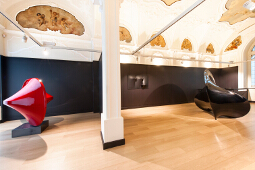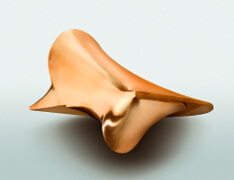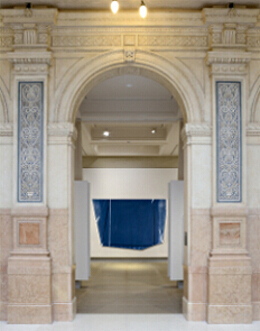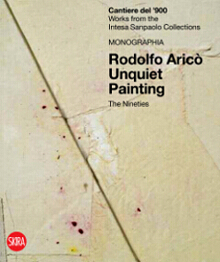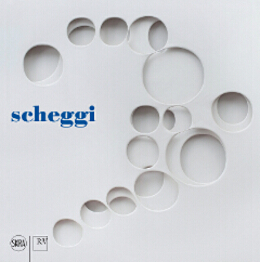GIANNI COLOMBO
The Body and the Space 1959-1980
Robilant + Voena, London
2nd October – 20th November 2015
Exhibition curated and monograph edited by Francesca Pola and Marco Scotini
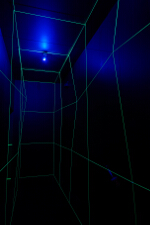

Gianni Colombo liked to define his works as “estesie” (“esthesias”): spaces that were both physical and psychic, in which to perceive a direct experience of our relations with the world, created to make us reflect on the conventionality of our most common actions (seeing, touching, walking) and free us of our acquired conditioning. Since the end of the 1950s, he created works conceived as activators of unusual situations, and spaces planned as places of non-conformist behaviour. Every work by Colombo is characterised by coordinates of basic relationships which, despite being absolutely immediate, are never obvious but always unexpected. The dimension that crops up regularly in his work, which has always been conceived in direct and close relation with he who experiences it, is that of astonishment. An astonishment that is not produced by artificial, spectacular or scenographic machinations, but by the very simplicity of his projects. It is this meaningful simplicity that produces an immediate empathy with every object or space he created, which through our body become spaces for a direct and unexpected experience of our coordinates of relating to reality.
Colombo’s work today is at the centre of widespread and growing international interest. This interest is primarily motivated by the progressive and inevitable recognition of the importance and quality of his creative achievement in a historical sense. However, it is undeniable that such recognition must necessarily be corroborated by being able to regard Colombo’s work as a fruitful and vital source of present and future developments, confirming the persistent topicality of his oeuvre for the new creative generation with regard to the elements of environment, performance, participation and social relations characterising his work. (…)
Although his place among the masters of international kinetic art is undisputed, the importance of Colombo’s creative achievements cannot be attributed solely to that movement and period, but must be understood in terms of a broader vision of radical and topical redefinition of the very coordinates of experience and significance of making art. (…)
It was in this way that between the 1950s and 1960s, Colombo’s highly-personal kinetic or, better, “kine–esthesia” was born; characterised by a dimension of tactility, corporeity and the physical and deliberately committed use by the viewer, who constitutes the fulcrum of the artist’s creative interests. And on the other hand, the constant challenge and spatial ambition that from the mid-1960s was already leading him to the creation of his first immersive spaces: planned as basic estranging situations in order to trigger unusual processes of reflection, reaction and behaviour. In both cases, the artist’s goal was the same: to create objects and environments that were instruments for a progressive emancipation from our conventions of relationship with the world, making us think through the body.
Colombo saw movement (of the object, the environment, the body that perceives and walks through them) as a space for thought and acquisition of freedom: he sought to position us constantly in a state of total perceptiveness that could be called “pedagogical immersion”, to make us aware players of our future.
From F. Pola, The Unexpected Space, in Gianni Colombo. The Body and the Space 1959-1980, monograph published on the occasion of the exhibition, Robilant + Voena, London, October 2 – November 20, 2015, Marsilio, Venice.
